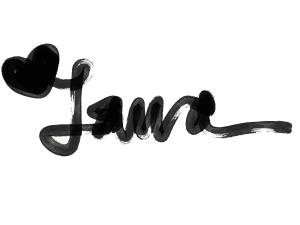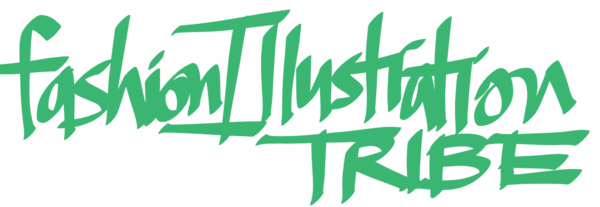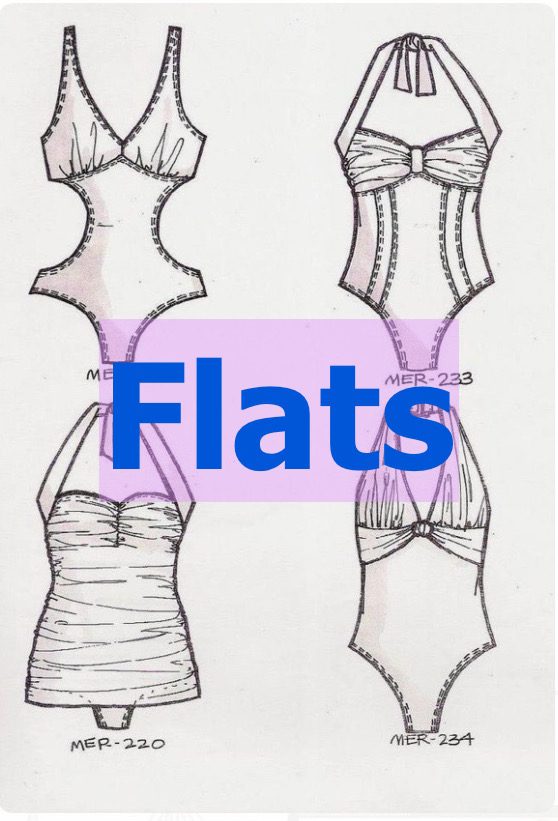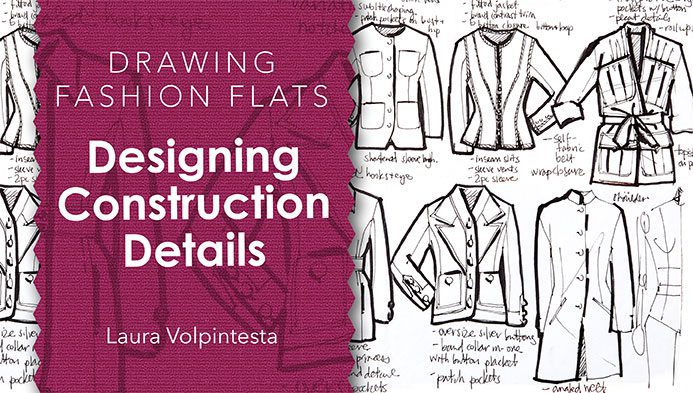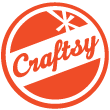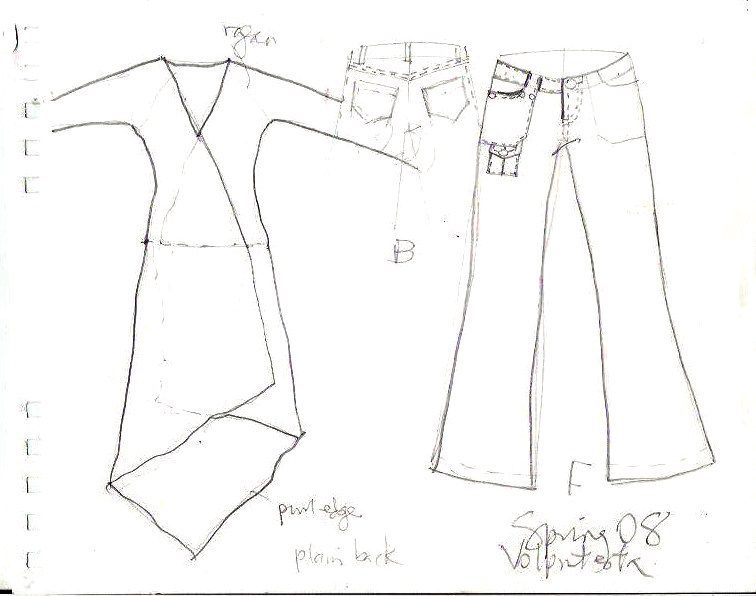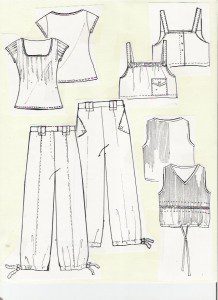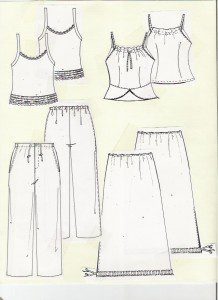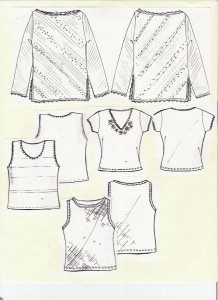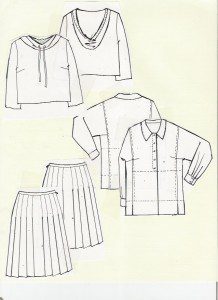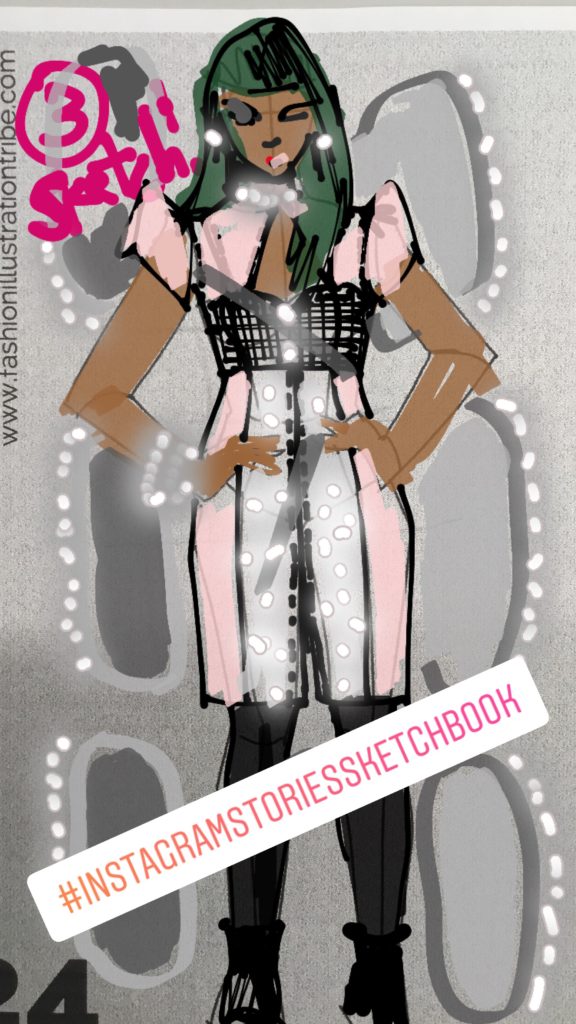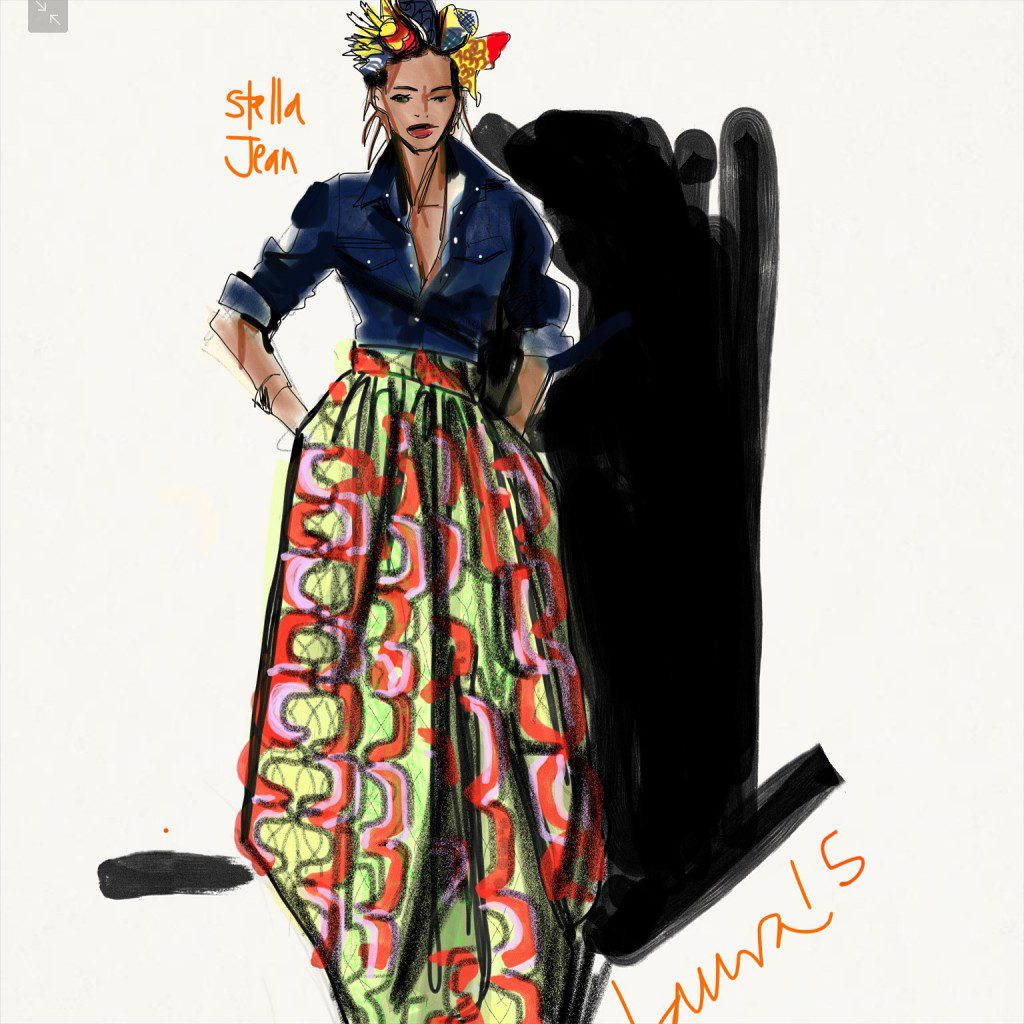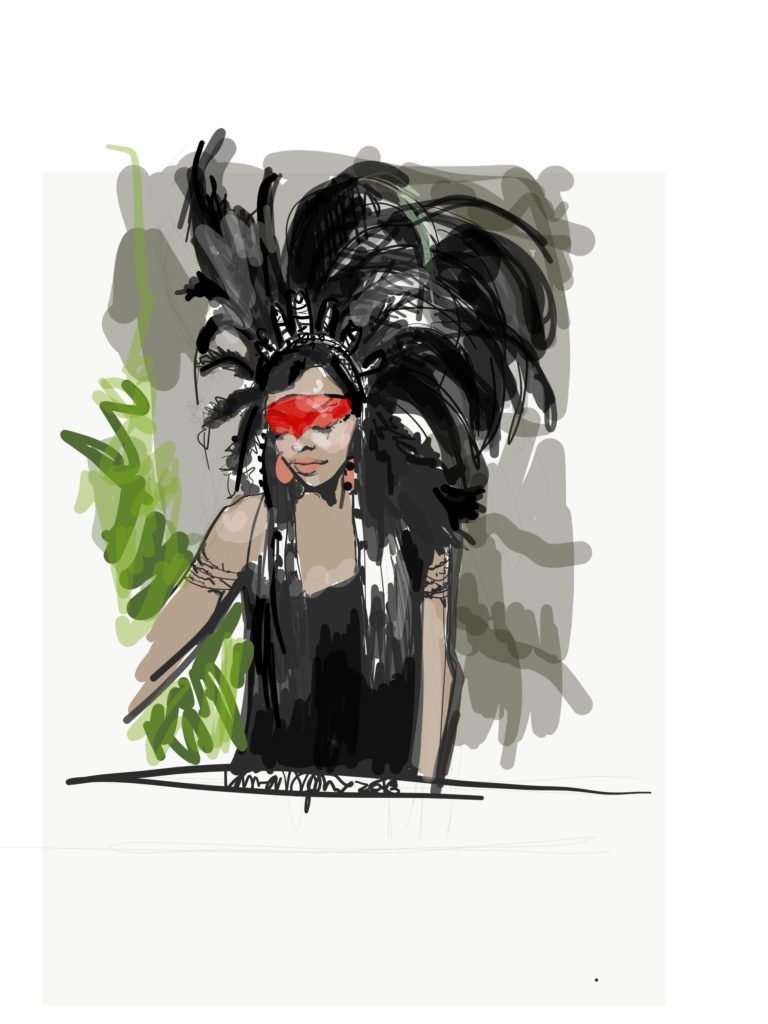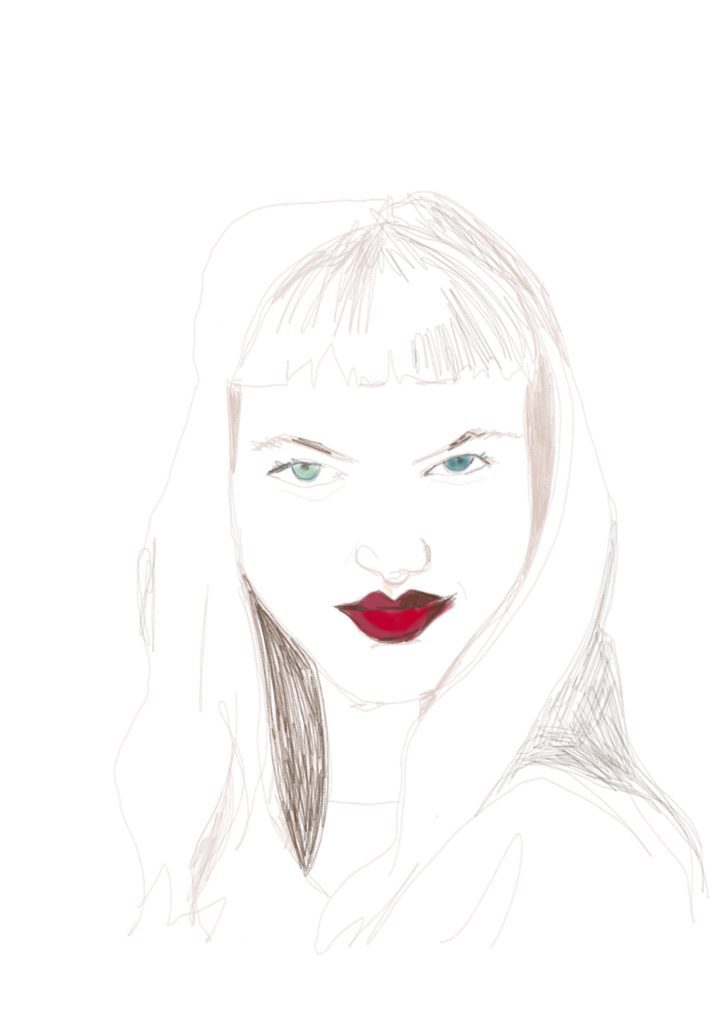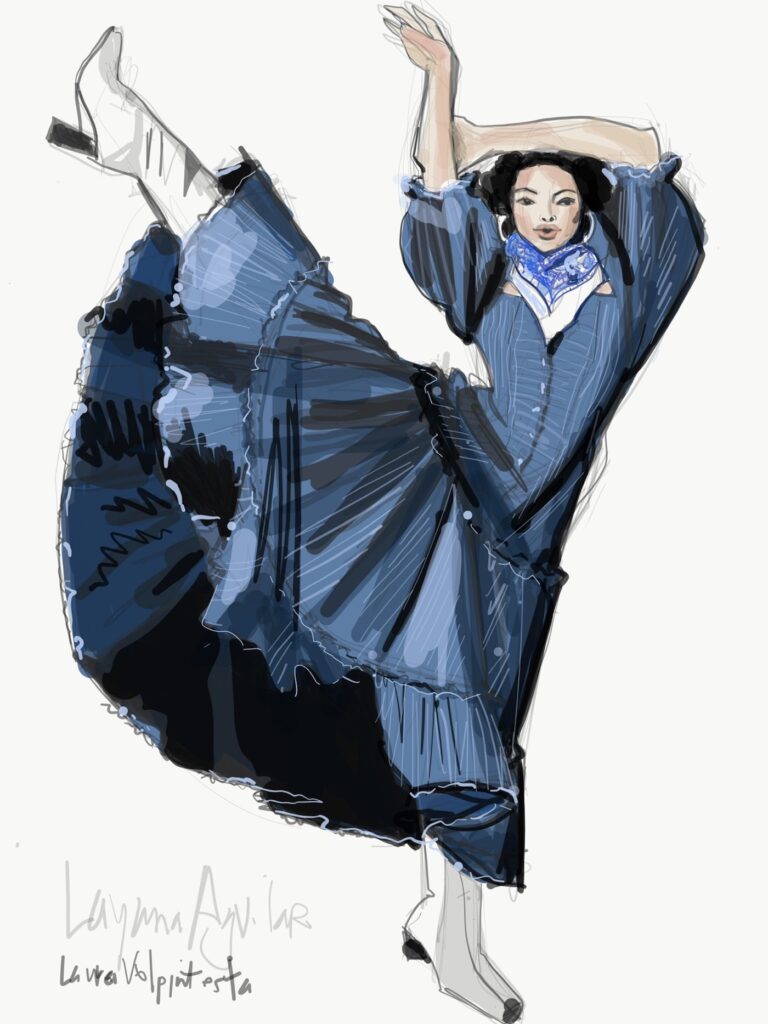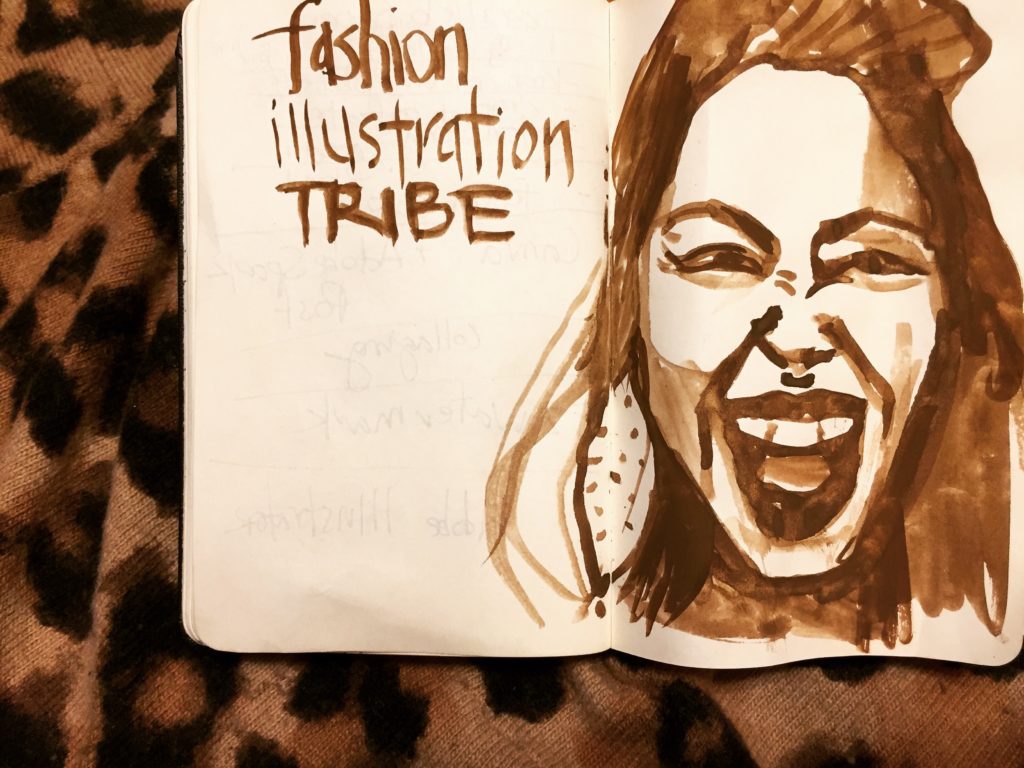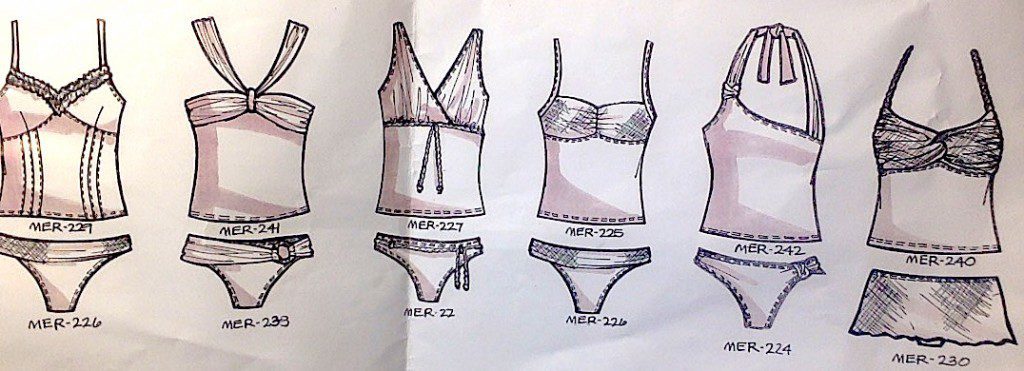 Designing fashion with fashion flat sketches
Designing fashion with fashion flat sketches
Hi! first off I just released a Craftsy.com class all about designing fashion thru flat sketches–designing them, sketching them, from beginner to more advanced. techniques.
I’m so proud of it and I adored this experience of working with their brilliant team and filming in their beautiful studios!!! Really and truly.
The flats at the top of this page I sketched for Target’s Merona line when I freelanced there. I also was involved with the technical design of this Merona Swimwear Collection.
When I worked at Target, ALL OF THE DESIGN HAPPENED IN AND ON FLAT SKETCHES! They were central to the process of creating each garment as well as the line.
Every detals was documented and updated through the design process. That’s the beauty of
designing fashion with fashion flat sketches.
You have a “virtual” garment on paper (plus a page to record all measureements, and fit corrections, called a spec) when you have a flat sketch.
Click here to view the trailer and check out the fashion flats class, filmed in Craftsy’s studios in Denver, CO!
Here are some loose flats sketched
from magazine photo using fine pens and sharpie.I was focusing on drawing drawstrings and elastic shirring.
Designing fashion with fashion flat sketches
sketches an be best done with a croquis body or croquis template , or free-hand, or to scale. Some people go straight to Adobe Illustrator.
(on my site you can find a male croquis, kids and toddler, teen and tween girls fashion croquis, maternity, and plus size fashion croquis templates).
A croquis template keeps all of your sketches within exacly the same size so they all “match up” beautifully as fashion line or collection.
In my Freedom Fasino Program you will learn how to create and use your own customizable, adaptable fashion model croquis templates. Sign up if registration is open, or get started, by signing up for email updates- you’ll receive templates, my 101 Fashion Design Inspiration Prompts E-book, video model building/drawing tutorial and more!!
Scroll down for more examples.
Using a pre-sketched TEMPLATE body like this, you’ll be designing fashion with fashion flat sketches
Just draw the clothes as if they are on the body, and have really specific and clear references when you draw, like:
- How long is the jacket compared to the model’s hip level?
- What is the sleeve length relative to the wrist / elbow? How wide is it compared to the actual wrist width?
- Can you see how wide is the hem of the pant?
- How fitted is the waist?
- How high or low are the pockets relative to the body parts?
- Where is center front line?
- Where are the buttons, zippers, etc?
- Compare how deep is the front neckline relative to the neck, bust line?
- Notice how wide is the neckline relative to the actual neck?
- (Essentially, these are questions about the proportion of the fashion garment)
All of these and more landmarks are visible on your croquis or template
so you can decide design choices basesd on comfort, function, visual effect, or all three at once!
“What if I prefer to
sketch and design fashion digitally?”
It’s quite easy to make fashion flat sketches by tracing over one of these bodies with copy or printer paper and a pencil to get the shapes just so.
(Do this in #2 pencil or mechanical #2, then ink them with felt pens- info here.)
Designing fashion with fashion flat sketches
using one of these templates similar to mine, they will come out “narrow”– because a body or garment that looks the way we see it when we look at it on the street or model– is narrower than reality.
All of the fashion flat sketches above were created using a flat doll or croquis template. The sketches below were created using measurements.
Notice that the human is cylindrical/round/deep, and a garment that is lying flat has nothing to wrap around.
The challenge of this is that they look “chic” -er that way, but it can be hard to fit pockets, panels, side seams, all of the details on a narrower looking flat. In order to really fit everything easily for tech, you’ll need to use a wider flat.
See, a garment flat on the table is wider than it appears on a human
so if you draw your flats to scale, they will certainly be wider compared to their length (yes, proportion, proportion, proportion is the word when you’re designing shapes!)
Summing it up:
The narrower figure can be more useful for a presentation that wants to communicate how the clothes look on the figures, while the flats drawn to scale , which are wider, are more accurate and give adequate room for including design details. As usual, you should choose your method based on the purpose intended for the flats you are creating. You can ask if you are working for someone else if they want the flats for tech or for illustration.
At my first job designing fashion with fashion flat sketches
…I found that the best way to work flats was to always ask whoever I was working for for flats from last season, and use those flats as a foundation/guide since each house has their own style. If you think the quality inferior to your own, then it’s a great opportunity to improve them for them!:0) If they’re better than you’ve ever done, now you have a great example to follow!
The best tools/ art supplies for creating fashion flats and technical drawings by hand are Micron or other felt tip pens. After a light pencil sketch, of course.
We’ll cover a range of different techniques for representing your design concepts in full color in my online and self-paced Fashion Course Program.
The below flats were all created TO SCALE. Notice the different proportional appearance from the other flats higher up in the post.
The flat sketches below are from one of the first jobs that I EVER had in the fashion industry in NYC! I sketched each one of these flats to scale from samples from Europe. I learned so much doing that.
Here’s a Hint:
In Fashion Flat Sketches,it’s really all about the HPS (High Point Shoulder) length, and the sweep.
But you don’t know what those are?
Basically, the length is the measurement from the HPS (located at the side neck: the highest point on the garment’s body length. Measure from this point to the lowest point of the garment hem to determine the maximum length of the garment.
Meanwhile, the SWEEP is the width of the garment at the hem. Once you have these two measurements, you can draw up a flat to scale in 1/8 or 1/4 scale from the original by sketching out a frame as wide as the sweep and as tall as the HPS length.
COMMENT BELOW and let me know what you think!
Remember, working flats to scale is a wonderful way to truly be able to fit all of the details in to your flat, for an exact record of a design.
DRAW YOUR FASHION WOMAN FOR REAL! No body distortion needed to illustrate a beautiful female model.
What do you want to do, love? How can I help?
Visit the COURSES tab and start your journey today- from mini-workshops to take beginners to a whole new level, to deep dive committed journeys into the world of fashion design and illustration.
Share your questions or comments here!
xo,

